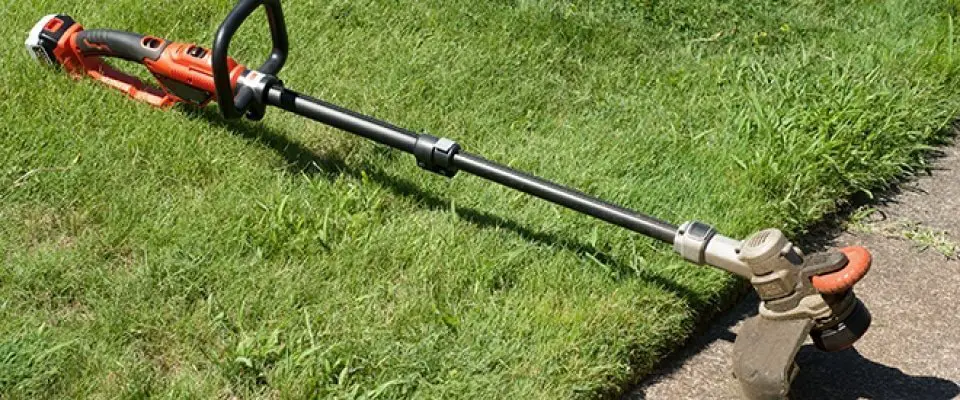What Kind Of Electric Weed Eater Do You Have? And We Don’t Mean Corded Or Cordless

An electric weed eater is also known as a string trimmer and or as a weed whacker. There are two different types of electric weed eaters; there are ones with cords and ones without cords. The ones with cords are known as corded electric weed eaters and the ones without cords are known as cordless electric weed eaters. Within both kinds of these electric weed eaters there are models that have a straight shaft and then there are models that have a curved shaft. Each kind of shaft has their own set of pros and cons and a consumer for a wide range of different reasons appreciates each.
How to tell What Type of Shaft for an Electric Weed Eater is the Best Kind to Use: A Curved Shaft or A Straight Shaft
Some reasons of which involves how you can hold the electric weed eater, what you use the electric weed eater for, how often you plan on using the electric weed eater, if you have a small yard or a large yard and much, much more. These reasons come in handy when trying to find the right electric weed eater to use because there are a lot of things that can actually go wrong right off the bat; for example, you may have a yard that is rather large and you get an electric string trimmer that has a short cord; this means that you can’t get done what you need to get done unless you use an extension cord or two along with it just to be able to reach everything. One cord is one thing but having several attached together strung throughout your yard can create more of a mess and leads to a higher chance of accidentally cutting the cord with the piece of equipment.

Another example of something that can go wrong is based on the type of shaft that your electric weed whacker has; you may have one that is a straight shaft which is great for edging but hard to get underneath stuff and vice versa. More information about the shafts is mentioned below.
More Information on a Straight Shafted Electric Weed Eater
- An electric weed eater with a shaft that is straight is perfect for when you want to create straight edges in your lawn. Such as down the sides of a sidewalk, pathway, or footpath. As well as with keeping the yard uniformed and great for all lines that need to be cut straight.
- A straight shafted electric weed eater is a bit heavier than one that has a curved shaft; this is because the straight shaft is more material which means more weight. More to move around, more to use and handle, more to keep straight and steady when using.
- When using an electric weed eater that has a straight shaft it is best to keep it straight, up and down, while in use. You should not stand on the grass itself when using it; if possible try to stand on the pathway or out of the way. Staying out of the way allows the cut to be straight and even and not good here and off into the yard somewhere else.
More information on a Curved Shafted Electric Weed Eater
- An electric weed eater with a shaft that is curved is more ideal to be used around pathways where there is a curve. Such as around flowerbeds, around trees, near fence posts and near buildings. As well as going underneath shrubbery or anything else; because the shaft is curved it is a lot easier to handle and maneuver. It is also easier to go underneath said objects because it has less to try to shove under it. A straight shaft one you need to pretty much get on the ground to use for this sort of task which is not wise at all. A curved shaft is your best for almost all uses and reasons.
- A curved shafted electric weed eater is one of the lightest models out there; this is because the handle is a lot shorter so you have less to move around and manage while using it. Having less to move around means you won’t be as sore when you are done and you can reach areas that are hard to get in the first place.
- When using an electric weed eater that has a curved shaft it is best to keep it as level as possible when in use; for the most you can rotate the head on these machines so try to keep the angle at ninety degrees exact. This is also known as a right angle and helps keep what you are cutting even and uniformed.
The other articles may you concern, as this is by:

